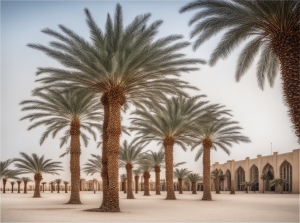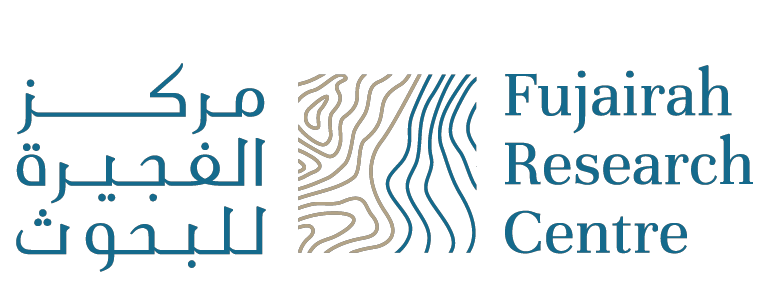
Swaying Elegance: The Majestic Palm Trees of the UAE
In the heart of the United Arab Emirates (UAE), where the golden desert sands meet the azure sky, a symbol of timeless elegance graces the landscape—the majestic palm tree. Standing tall and proud, these iconic trees have become synonymous with the allure and opulence of the UAE. In this oasis of modernity, the palm trees not only provide shade and sustenance but also serve as a living testament to the nation's deep-rooted connection with nature and tradition. Palm trees have been an integral part of the UAE's cultural and historical tapestry for centuries. Traditionally, these trees were a source of sustenance for the Bedouin people, offering them dates and shelter from the relentless desert sun. The date palm, in particular, holds a special place in Emirati culture, symbolizing hospitality and prosperity. Today, the iconic date palms continue to thrive, seamlessly blending tradition with the modernity that defines the UAE. As a testament to human ingenuity and a celebration of the symbiotic relationship between technology and nature, the UAE is home to one of the world's most ambitious and awe-inspiring architectural endeavours the Palm Jumeirah. This man-made archipelago, shaped like a palm tree, stretches out into the Arabian Gulf, redefining the coastline of Dubai. The Palm Jumeirah is a marvel of engineering, with its intricate network of fronds and a crescent-shaped breakwater, creating a stunning palm tree silhouette visible from space. Beyond its architectural grandeur, the Palm Jumeirah is a testament to the UAE's commitment to sustainable development, incorporating innovative water management systems and green technologies to maintain the ecological balance of the area. The allure of palm trees in the UAE extends beyond their cultural and architectural significance; they play a pivotal role in the country's tourism industry. Luxurious resorts and hotels dot the coastline, each carefully designed to offer visitors an immersive experience amidst the palm-fringed landscapes. These palm-lined retreats provide a tranquil escape from the bustling city life, allowing guests to unwind in the shade of these elegant trees. From private beach cabanas to outdoor dining under the swaying palms, the UAE's hospitality sector has seamlessly integrated the natural beauty of palm trees into the fabric of its tourism offerings. The blend of modern luxury and natural splendour is epitomized by the world-famous Atlantis, The Palm resort. Nestled at the apex of the Palm Jumeirah, this architectural marvel not only offers breathtaking views of the cityscape but also ensures that guests are surrounded by the serene beauty of palm-lined beaches. The Palm Jumeirah, with its palm tree-inspired design, has become a symbol of Dubai's ambition and innovation. It stands as a testament to the city's ability to transform a vision into reality, creating a destination that captivates the world's imagination. As visitors traverse the palm fronds, they are treated to an experience that seamlessly fuses natural beauty with human ingenuity, a journey through an oasis in the heart of a bustling metropolis. Recognizing the importance of preserving the country's natural heritage, the UAE has implemented various eco-friendly initiatives to protect and nurture its palm trees. Sustainable farming practices, water conservation efforts, and community engagement programs contribute to the conservation of these iconic trees. Local communities actively participate in tree planting initiatives, ensuring that future generations can continue to enjoy the beauty and benefits of palm trees. These initiatives not only promote environmental sustainability but also foster a sense of collective responsibility among the residents, creating a harmonious balance between urban development and nature preservation. The commitment to environmental conservation is further exemplified using palm leaves in traditional handicrafts. Emirati artisans skilfully weave intricate patterns, creating items that serve both as a nod to tradition and a celebration of the natural resources that abound in the region. From baskets to decorative items, these creations not only showcase the versatility of palm trees but also contribute to the preservation of cultural heritage. As the sun sets over the UAE, casting a warm glow on the palm-fringed horizons, one can't help but marvel at the timeless beauty of these iconic trees. From their humble origins as a vital resource for the Bedouin people to the modern architectural wonders and luxurious resorts that showcase their grace, palm trees have become an integral part of the UAE's identity. During the ever-evolving skyline and cutting-edge technology, the palm trees of the UAE stand tall as a symbol of resilience, tradition, and natural beauty. They serve as a reminder that, no matter how fast-paced life becomes, there is always room to cherish and preserve the timeless elegance that nature graciously bestows upon us. The palm trees of the UAE are not just a sight to behold; they are a living legacy, rooted deep in the soul of a nation that continues to embrace its past while reaching for the stars. As we delve into the history of palm trees in the UAE, we find that their significance goes beyond aesthetics and tourism. The practical uses of palm trees in the region have been a cornerstone of survival and sustainability for generations. From the humble date palm to the towering coconut palm, these trees have been lifelines in the challenging desert environment. The date palm, often referred to as the "tree of life," has been a staple in the Emirati diet for centuries. Its sweet fruits provide not only a delicious treat but also a rich source of nutrition. The versatility of dates is unparalleled; they can be consumed fresh or dried, incorporated into various dishes, or pressed for their sweet, nutritious syrup. Moreover, the date palm has been a source of shade and building material for the indigenous people of the UAE. Its fronds are used to create traditional shelters, providing a respite from the scorching desert sun. The Bedouin people, in particular, have relied on the date palm not just for sustenance but for the very fabric of their daily lives. Beyond the date palm, other varieties, such as the coconut palm, have found their place along the UAE's coastal regions. The coconut palm, with its iconic fronds swaying in the coastal breeze, adds a tropical touch to the landscape. Coconuts, with their refreshing water and nutritious meat, have become popular not just among locals but also among the expatriate population and tourists seeking a taste of the exotic. The significance of palm trees is not confined to their practical uses. They are deeply embedded in the cultural and religious practices of the UAE. The Quran, the holy book of Islam, makes numerous references to palm trees, further solidifying their importance in the region. Palm trees are often associated with prosperity, fertility, and resilience—a symbolism that resonates with the values upheld by the people of the UAE. As the UAE continues to forge ahead in the realms of technology and innovation, it has not forgotten its roots. The juxtaposition of futuristic skyscrapers against the backdrop of swaying palm trees is a visual representation of the nation's ability to embrace modernity without losing sight of its heritage.
